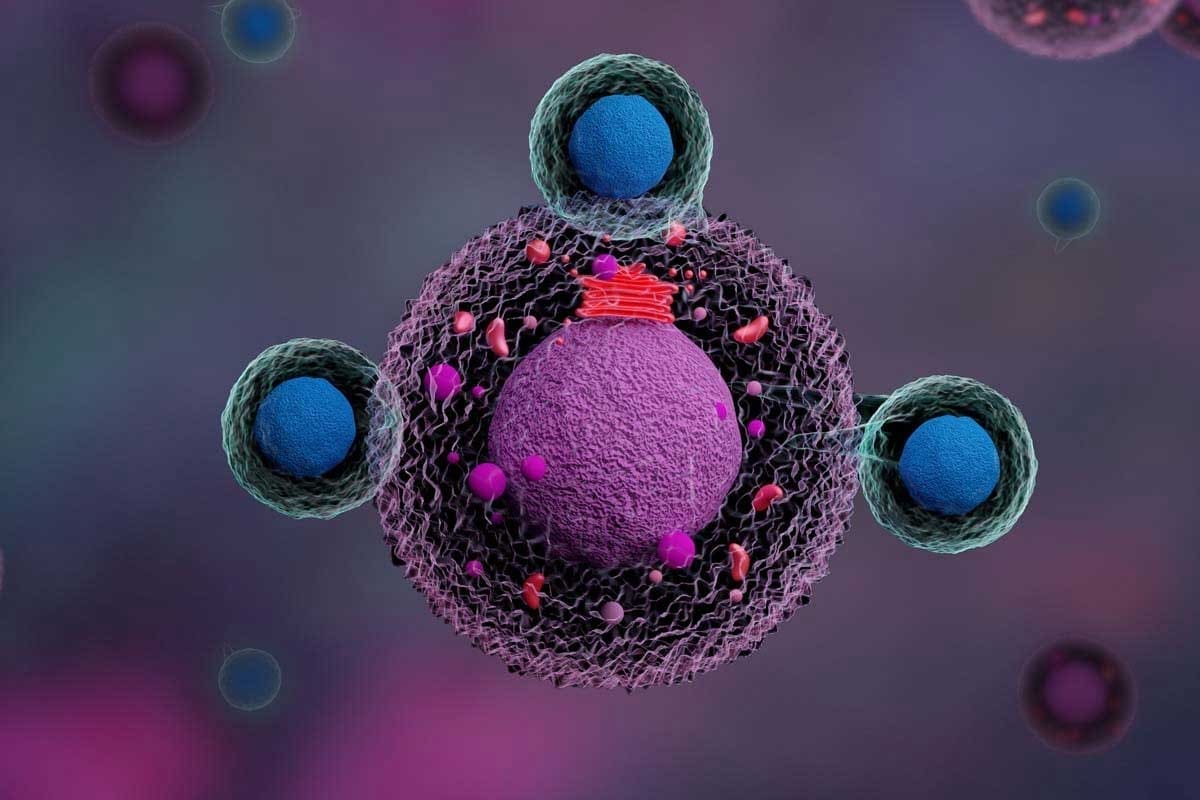Last Updated on November 26, 2025 by Bilal Hasdemir

At Liv Hospital, we know how vital it is to understand how long a heart stent will last. A heart stent is a permanent fix to keep your coronary arteries open. It aims to stop restenosis and keep blood flowing. These stents are made from strong materials like stainless steel or cobalt chromium alloy. They are built to last for many years in your arteries.
Even though stents are meant to be permanent, their life span can change. Research shows that the longevity of stents depends on several things. This includes the type of stent and where it’s placed in the artery. We’ll look into these details in the next sections.
Key Takeaways
- Heart stents are designed to be permanent implants.
- The lifespan of a stent can vary based on several factors.
- Modern stents are made from durable materials.
- The type of stent used can influence its longevity.
- Stent location within the artery can affect its durability.
Understanding Heart Stents: Purpose and Function
Heart stents are tiny, mesh-like tubes that keep coronary arteries open. They have changed how we treat blocked arteries. Now, patients can get treatment without big surgery.
What Is a Cardiac Stent?
A cardiac stent is a small, metal mesh tube. It’s used during an angioplasty to widen a blocked artery. The stent is on a balloon catheter, which is guided to the narrowed area.
When the balloon is inflated, the stent expands. It stays in the artery, keeping it open. This improves blood flow to the heart.
How Stents Work to Keep Arteries Open
Stents keep arteries open after angioplasty. They:
- Restore normal blood flow to the heart muscle
- Reduce symptoms of angina and other coronary artery disease
- Improve the patient’s quality of life by allowing for more activity
Stents act as a mechanical support for the artery walls. This is key for patients with complex or multiple blockages.
The Evolution of Stent Technology
Stent technology has come a long way. Early stents were bare metal, which sometimes caused in-stent restenosis. To fix this, drug-eluting stents were created. These stents release medications to prevent new tissue growth, reducing restenosis risk.
Recently, bioresorbable vascular scaffolds (BVS) have been developed. These stents dissolve over time. They aim to reduce long-term complications from permanent stents.
Types of Heart Stents and Their Expected Durability
There are many types of heart stents, each with its own benefits and drawbacks. Knowing the differences is key for those getting coronary artery treatment. The right stent can greatly affect the success of the procedure and the patient’s health in the long run.
Bare Metal Stents (BMS)
Bare metal stents are made from metals like stainless steel. They work by mechanically keeping the artery open. Though less used today, they are an option for some patients.
Drug-Eluting Stents (DES)
Drug-eluting stents release medication slowly to prevent artery narrowing. This makes them a top choice for many. A study on PMC shows they reduce the need for more procedures.
Bioresorbable Vascular Scaffolds (BVS)
Bioresorbable vascular scaffolds dissolve over time after doing their job. They are made to be absorbed by the body, aiming to avoid long-term stent issues. But, more research is needed to confirm their long-term safety and effectiveness.
Comparing Longevity Between Stent Types
When looking at stent longevity, material and design matter a lot. Drug-eluting stents often last longer than bare metal stents. Bioresorbable scaffolds are promising but need more study.
The right stent choice depends on many factors. These include the patient’s health history, the specifics of their artery disease, and their lifestyle. By understanding the different stents and their durability, patients can make better decisions about their treatment.
How Long Will a Stent Last? The Clinical Evidence

Clinical evidence is key in figuring out how long stents last and how well they work. New stent technologies have made them last longer and work better.
Short-Term Performance (1-5 Years)
Stents do great in the short term, helping most patients feel better fast. Studies show drug-eluting stents (DES) are better than bare-metal stents (BMS) at preventing blockages. For example, a study in the Journal of the American College of Cardiology found DES are better at avoiding the need for more procedures.
Stents’ early success comes from better design and materials. Drug-eluting stents are special because they release medicine that stops cells from growing too much.
Medium-Term Outcomes (5-10 Years)

Stents keep working well for a few years, keeping arteries open. DES keep showing benefits even after 10 years. A study in the New England Journal of Medicine found DES patients had very little risk of stent problems after 10 years.
- Key findings include:
- Low rates of in-stent restenosis
- Reduced need for repeat revascularization procedures
- Improved long-term clinical outcomes
Medical Expert. Stone, a top cardiologist, said in a
study in the Circulation journal, “Drug-eluting stents have changed cardiology, giving patients a safe and effective treatment for heart disease.”
Long-Term Studies (10+ Years)
Long-term studies on stents have given us important insights. Even though we don’t have much data over 10 years, new evidence suggests stents can last up to 15 years or more.
| Stent Type | 1-5 Years | 5-10 Years | 10+ Years |
| Bare Metal Stents (BMS) | High rate of restenosis | Moderate rate of TLR | Limited data |
| Drug-Eluting Stents (DES) | Low rate of restenosis | Low rate of TLR | Generally favorable outcomes |
In conclusion, studies show modern stents, like drug-eluting stents, work well for a long time. Ongoing research keeps improving our understanding of stent longevity, helping patients even more.
Factors That Influence Stent Lifespan
Many things affect how long a heart stent lasts. This includes the stent’s material, design, and where it’s placed. Knowing these factors helps improve stent performance and patient health.
Stent Material and Design
The material and design of a stent are key to its lifespan. Today’s stents are made from materials like stainless steel and cobalt-chromium. Drug-eluting stents (DES) are popular because they help prevent arteries from narrowing.
The stent’s design, like its thickness and coating, also matters. Thinner struts and special coatings can lower the risk of problems. We’ll look closer at how these features affect stent lifespan.
Placement Technique and Location
The way a stent is placed and where it goes in the artery matter a lot. Precise placement ensures the stent fits well and works right. Stents in areas with a lot of stress or bends might not last as long.
Tools like intravascular ultrasound (IVUS) and optical coherence tomography (OCT) help place stents better. They let doctors check how well the stent fits and spot problems early.
Patient-Specific Anatomical Factors
Each patient’s body is different, which can affect stent lifespan. Things like artery size and how curved it is can matter. Stents in very calcified areas might not expand right, leading to problems.
It’s important to understand these differences when choosing a stent. This way, doctors can pick the best stent and place it in the best spot. This helps make sure the stent works well and the patient does well.
Medical Conditions Affecting Stent Longevity
It’s important to know how health issues can change how long a stent lasts. Some conditions can really affect a stent’s performance over time.
Impact of Diabetes on Stent Performance
Diabetes can shorten the life of heart stents. People with diabetes often see their atherosclerosis get worse faster. This raises the chance of in-stent restenosis. It’s key to manage diabetes well to keep stents working right.
Research shows diabetic patients might need more stent replacements. But, new stent tech and better diabetes care are helping.
Hypertension and Stent Durability
Hypertension, or high blood pressure, can also shorten stent life. High blood pressure can stress the stent and artery walls, causing problems. It’s vital to control blood pressure through lifestyle changes and meds if needed.
Keeping blood pressure in check can lower stent issues and boost heart health.
Hyperlipidemia and Stent Function
High cholesterol or triglycerides in the blood can also harm stent performance. High lipid levels can make atherosclerosis worse, affecting stent openness. Patients with high lipids should work with their doctors to manage it with diet, exercise, and meds if needed.
Managing high lipids helps stents last longer and keeps the heart healthy.
Lifestyle Factors That Impact How Long Stents Last
Lifestyle choices are key in how long a heart stent lasts. After getting a stent, patients can make big changes to help it last longer. These changes include diet, exercise, and managing stress.
Smoking and Its Effects on Stent Patency
Smoking is bad for your heart and can harm a stent. The chemicals in tobacco smoke can make the artery narrow again. This is called restenosis. It’s very important to stop smoking to keep the stent healthy.
The American Heart Association says quitting smoking can cut heart disease risk by 50% in a year. We tell patients with stents to never smoke.
“Quitting smoking is the single most important step a smoker can take to improve their health and reduce the risk of heart disease.”
Diet and Exercise Considerations
Eating right and exercising are key for stent health. A diet full of fruits, veggies, whole grains, and lean proteins helps control cholesterol and blood pressure.
| Dietary Component | Recommended Intake | Benefit |
| Fruits and Vegetables | 5 servings a day | Rich in antioxidants and fiber |
| Whole Grains | At least 3 servings a day | Helps manage cholesterol |
| Lean Proteins | Include in every meal | Supports heart health |
Doing 150 minutes of exercise a week, like brisk walking or swimming, boosts heart health and stent life.
Stress Management for Stent Recipients
Too much stress is bad for your heart and can shorten stent life. Activities like meditation or yoga can help manage stress.
Research shows stress management can lower blood pressure and improve well-being. It might also make the stent last longer.
By living healthier, quitting smoking, eating well, exercising, and managing stress, patients can make their stents last longer.
Medication Adherence and Stent Longevity
How long a cardiac stent lasts depends a lot on the patient’s medicine-taking habits. It’s a key part of taking care of yourself after a stent is put in. Taking your medicine as told helps keep the stent open and avoids problems.
Antiplatelet Therapy: A Critical Component
Antiplatelet therapy is very important for people with cardiac stents. It uses medicines like aspirin and P2Y12 inhibitors (like clopidogrel or ticagrelor). This therapy stops platelets from clumping and forming clots that could block the stented artery.
Key aspects of antiplatelet therapy include:
- Dual antiplatelet therapy (DAPT) is usually recommended for a certain period following stent placement.
- The duration of DAPT can vary based on the type of stent used and the patient’s risk profile.
- Adherence to the prescribed antiplatelet regimen is critical to prevent stent thrombosis.
Statins and Other Supportive Medications
Other medicines also help keep patients with cardiac stents healthy. Statins, for example, are key in managing cholesterol levels. They help prevent plaque buildup in arteries.
| Medication Type | Purpose | Benefits for Stent Longevity |
| Statins | Lower cholesterol levels | Reduces plaque buildup, stabilizes plaques |
| Beta-blockers | Reduce heart rate and blood pressure | Decreases cardiac workload, reduces ischemia |
| ACE inhibitors | Lower blood pressure, reduce strain on heart | Improves cardiac function, reduces remodeling |
Consequences of Medication Non-Compliance
Not taking your medicines as directed can be very dangerous for patients with cardiac stents. It can increase the risk of stent thrombosis, restenosis, and other heart problems.
The risks associated with medication non-compliance include:
- Increased risk of stent thrombosis, which can be life-threatening.
- Higher likelihood of in-stent restenosis, potentially requiring additional procedures.
- Greater risk of myocardial infarction and other cardiovascular events.
Understanding the importance of sticking to your medication plan is key. It helps keep your stent working well for a long time.
Potential Complications Affecting Stent Lifespan
Heart stents are very effective, but they can face several complications. Knowing about these issues helps manage patient hopes and improve long-term results.
In-Stent Restenosis: Causes and Timeframes
In-stent restenosis is when the artery narrows again after a stent is placed. This happens because of neointimal hyperplasia. It’s when the body grows new tissue, possibly blocking the artery again.
Causes and Risk Factors:
- Neointimal hyperplasia
- Stent underexpansion
- Patient factors (e.g., diabetes, renal failure)
In-stent restenosis can happen anytime in the first year after the stent is put in. The biggest risk is in the first 6-12 months.
Stent Thrombosis: Early, Late, and Very Late
Stent thrombosis is a serious issue where a blood clot forms in the stent. It can cause heart problems. It’s divided into early, late, and very late based on when it happens.
| Timing | Description | Risk Factors |
| Early | Occurs within the first 30 days | Incomplete stent apposition, antiplatelet therapy discontinuation |
| Late | Occurs between 30 days and 1 year | Delayed endothelialization, resistance to antiplatelet therapy |
| Very Late | Occurs after 1 year | Stent fracture, neoatherosclerosis |
Stent Fracture and Mechanical Failures
Stent fracture is when the stent breaks. This can cause problems like in-stent restenosis or stent thrombosis. The risk depends on the stent’s design, material, and where it’s placed.
Mechanical failures, like stent fracture, show why choosing the right stent and how to place it is key. New stent designs and materials aim to lower these risks.
Understanding these complications helps doctors take better care of patients. This improves how long stents last and the overall health of patients.
Common Patient Questions About Stent Durability
Many patients wonder how long their cardiac stents will last after they get them. We help them understand stent durability, future needs, and what to expect long-term.
Will I Need Another Stent in the Future?
Patients often ask if they’ll need another stent later. The answer depends on the stent type, their health, and following their treatment plan.
Studies show drug-eluting stents (DES) are less likely to cause blockages than bare metal stents (BMS). But, another stent might be needed if the disease gets worse or new blockages happen.
“The use of drug-eluting stents has significantly reduced the incidence of in-stent restenosis, but patients must always be watched for disease progression in other parts of the coronary arteries.”
Medical Expert, Cardiologist
Can Stents Wear Out or Expire?
Stents are made to last a long time. They don’t really “expire,” but problems like in-stent restenosis or stent thrombosis can occur.
| Potential Complications | Description | Typical Timeframe |
| In-Stent Restenosis | Narrowing of the artery within the stent | Within the first year |
| Stent Thrombosis | Formation of a blood clot within the stent | Can occur at any time, but risk is highest in the first month |
Special Considerations for Younger Patients
Younger patients have special concerns about stent durability. They might need more treatments or face stent problems over their lifetime.
We consider the stent type, lifestyle changes, and long-term medication for young patients. Regular check-ups are key to monitor the stent and address any issues quickly.
Understanding these factors and working with healthcare providers helps patients manage stent durability. This way, they can make informed decisions about their care.
Follow-Up Care to Maximize Stent Durability
To keep a heart stent working well, patients need to follow a detailed care plan. This plan helps the stent last longer and keeps the heart healthy.
Recommended Monitoring Schedule
Seeing a doctor regularly is key to check how the stent is doing and the heart’s health. Follow-up visits are usually:
- 1-2 weeks after the stent is placed
- Every 3-6 months for the first year
- Once a year after that, or as your doctor suggests
These visits help catch problems early and adjust treatment plans if needed.
Diagnostic Tests for Assessing Stent Function
Several tests are used to check how well the stent is working and if there are any problems. These include:
| Diagnostic Test | Purpose | Frequency |
| Stress Test | Evaluate heart function under stress | As recommended by your healthcare provider |
| Coronary Angiography | Visualize stent patency and coronary arteries | Typically performed if symptoms recur or as part of a clinical study |
| Intravascular Ultrasound (IVUS) | Assess stent expansion and apposition | During initial stent placement or if complications are suspected |
These tests are vital to make sure the stent is working right and spot any problems early.
The Role of Cardiac Rehabilitation
Cardiac rehab is a big part of caring for stent patients. It includes:
- Exercise to boost heart health
- Nutrition advice for heart-friendly eating
- Stress management to lower stress
- Lessons on managing risks and making lifestyle changes
By joining cardiac rehab, patients can greatly improve their heart health and make their stent last longer.
Conclusion: Optimizing Your Heart Stent’s Lifespan
To make your heart stent last longer, you need to change your lifestyle, take your medicine, and see your doctor regularly. Knowing what affects your stent’s life helps you stay healthy and keep your stent working well.
Managing health issues like diabetes and high blood pressure is key. Eating right, exercising, and handling stress are also important. Taking your medicines, like blood thinners and cholesterol-lowering drugs, is essential.
Seeing your doctor often helps catch problems early. This way, you can get help quickly to keep your stent open and your heart healthy. Working with your doctor and making smart lifestyle choices can help your stent last longer. This improves your heart health overall.
FAQ
How long do heart stents typically last?
Heart stents are made to stay in your body forever. But, how long they last depends on the stent type, your health, and your lifestyle.
What is the difference in longevity between bare metal stents and drug-eluting stents?
Drug-eluting stents might last longer because they have a lower chance of restenosis. But, both can last for years with good care.
Can medical conditions like diabetes affect how long my stent will last?
Yes, conditions like diabetes can make your stent last shorter. This is because they increase the risk of problems like restenosis or thrombosis.
How do lifestyle factors influence stent durability?
Your lifestyle choices, like smoking, diet, exercise, and stress, affect your stent’s life. Living healthy can help your stent work better and keep your heart healthy.
Is medication adherence important for stent longevity?
Yes, taking your medicines as told is key. This includes antiplatelet therapy and statins to keep your stent open and prevent issues.
Can stents wear out or expire over time?
Stents don’t “expire,” but they can be affected by disease growth. Good care and follow-up can help your stent last longer.
Will I need another stent in the future?
Whether you need more stents depends on your disease progress and how well your current stents work. Regular check-ups with your doctor are important.
How often should I have follow-up appointments after stent placement?
How often you need check-ups varies. It depends on your health and what your doctor suggests. Regular visits help keep an eye on your stent and heart health.
Are there special considerations for younger patients with stents?
Younger patients need more planning and monitoring because they might live longer with their stent. It’s important to manage your lifestyle and stick to your treatment plan.
What diagnostic tests are used to assess stent function?
Tests like angiography, stress tests, and coronary CT scans help check how your stent is working. They can spot problems early.
References
- van Domburg, R. T., & Serruys, P. W. (1999). Long term outcome after coronary stent implantation. Circulation, 100(15), 1619-1625. https://pubmed.ncbi.nlm.nih.gov/10490586/






